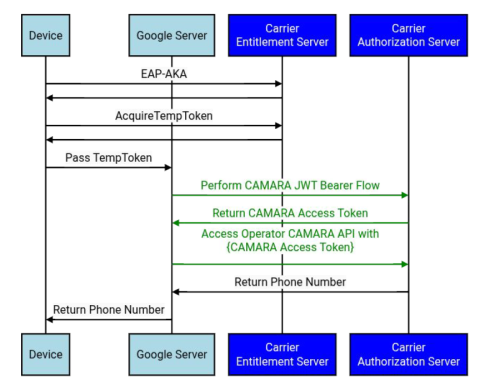Sandbox
Available in
- Germany,
- Netherlands,
- UK
Number Verification 2.0 is Vodafone’s next-generation authentication mechanism, designed to deliver a seamless, secure, and low-friction user experience.
It leverages operating system-level integration with the operator’s entitlement server and token-based API authentication to verify a user's mobile number, without requiring manual input or SMS delivery.
This API follows the CAMARA standard specification.
Number Verification 2.0 is Vodafone’s next-generation authentication mechanism, designed to deliver a seamless, secure, and low-friction user experience.
It leverages operating system-level integration with the operator’s entitlement server and token-based API authentication to verify a user's mobile number, without requiring manual input or SMS delivery.
This API follows the CAMARA standard specification.
| Version | v2.0.0 |
|---|---|
| Protocol | HTTPS |
| Sandbox URL | https://api-sandbox.vf-dmp.engineering.vodafone.com |
| Live URL | Coming Soon |
| Version history | Release Date | Status | Description |
|---|---|---|---|
| 2.0 | September 2025 | Sandbox Only | Number Verification 2.0 - Sandbox release. |
Before initiating the Number Verification API call, the solution integrates with the device operating system to capture user consent and authenticate via the TS.43 entitlement server. This operating system integration ensures a seamless experience for the end customer and offers the following additional benefits:
The following diagram shows a high-level sequence based on the Google Android implementation:

Discover, try, and purchase our APIs to start building your own apps